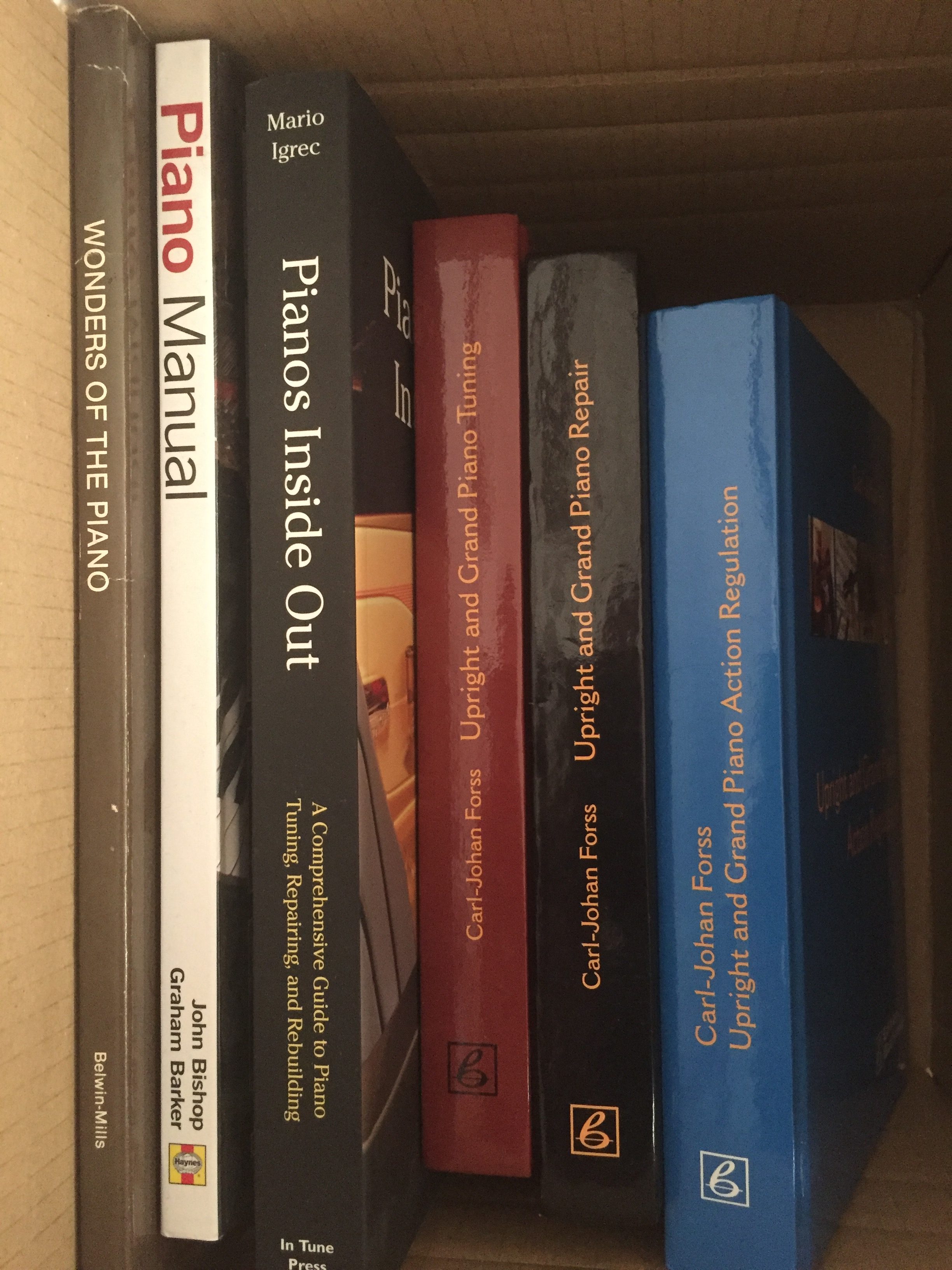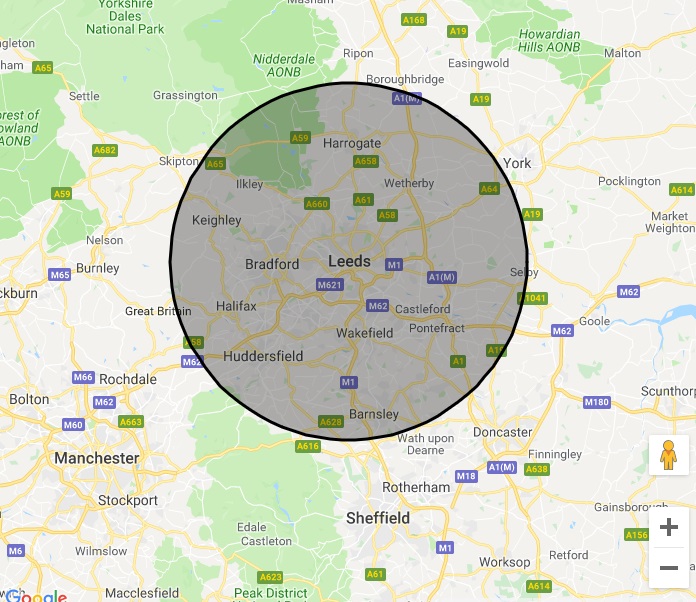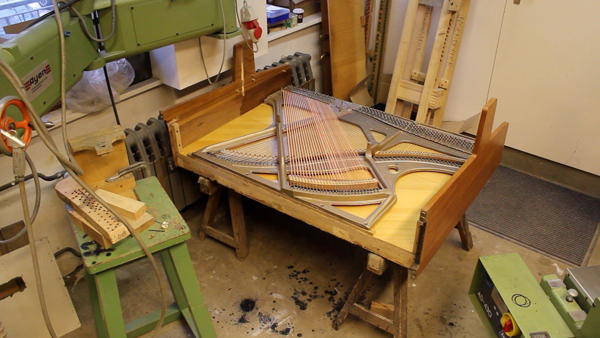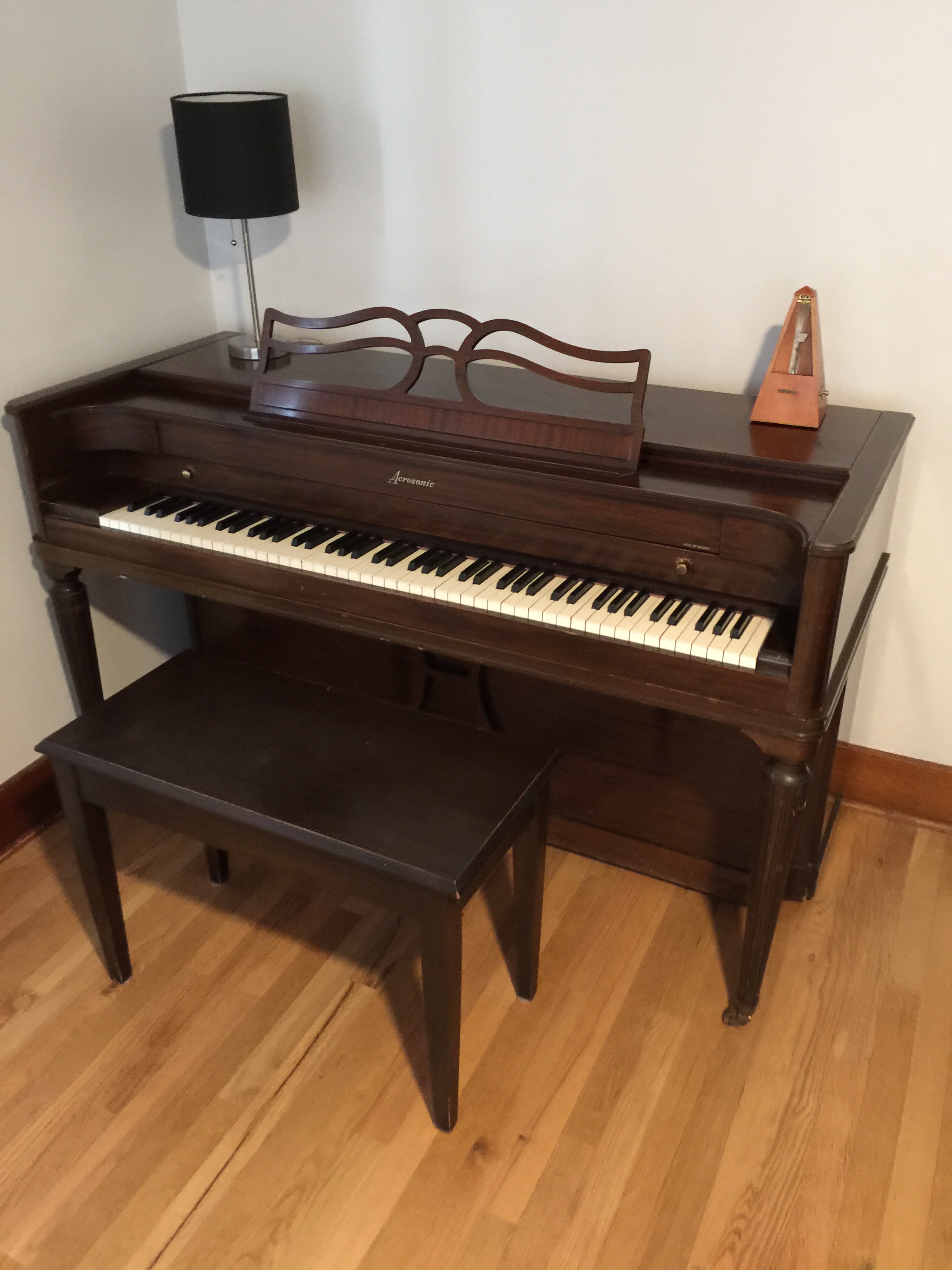
Today I received a polite message sent to me via Piano Tuner Leeds, asking about a full replacement of broken hammer flange cords on a second hand Yamaha U1. Needless to say, this will have to be discussed with the customer before pricing is decided upon. If you ever find yourself in his situation, it is highly advised that every cord is replaced. As with many broken action parts (particularly springs, tapes and cords), the breakage of one is a sign that others will soon follow. However, I always keep some spare rolls of cords in the car for emergency repairs. At a piano tuning visit to Headingley, Leeds I was urged to make a ten minute fix at the end of the booking, as is usually the case. In this instance, only one cord on the piano had broken – much to my relief.
Another job that occasionally comes up is the replacement of bad hammer butt felts and catcher leather on upright pianos. This is particularly important on older uprights, as the material tends to harden creating annoying clicks across the piano. As with many piano tuning and repair tasks, if only one or two need to replaced it can be completed for free after your tuning. I did not start a career in piano tuning to squeeze every penny out of the customer, but I do have bills to pay. That said, I want all my piano tuning clients to feel like they’ve been given a good deal as well as a first class service.
– Richard, Piano Tuner Leeds.










